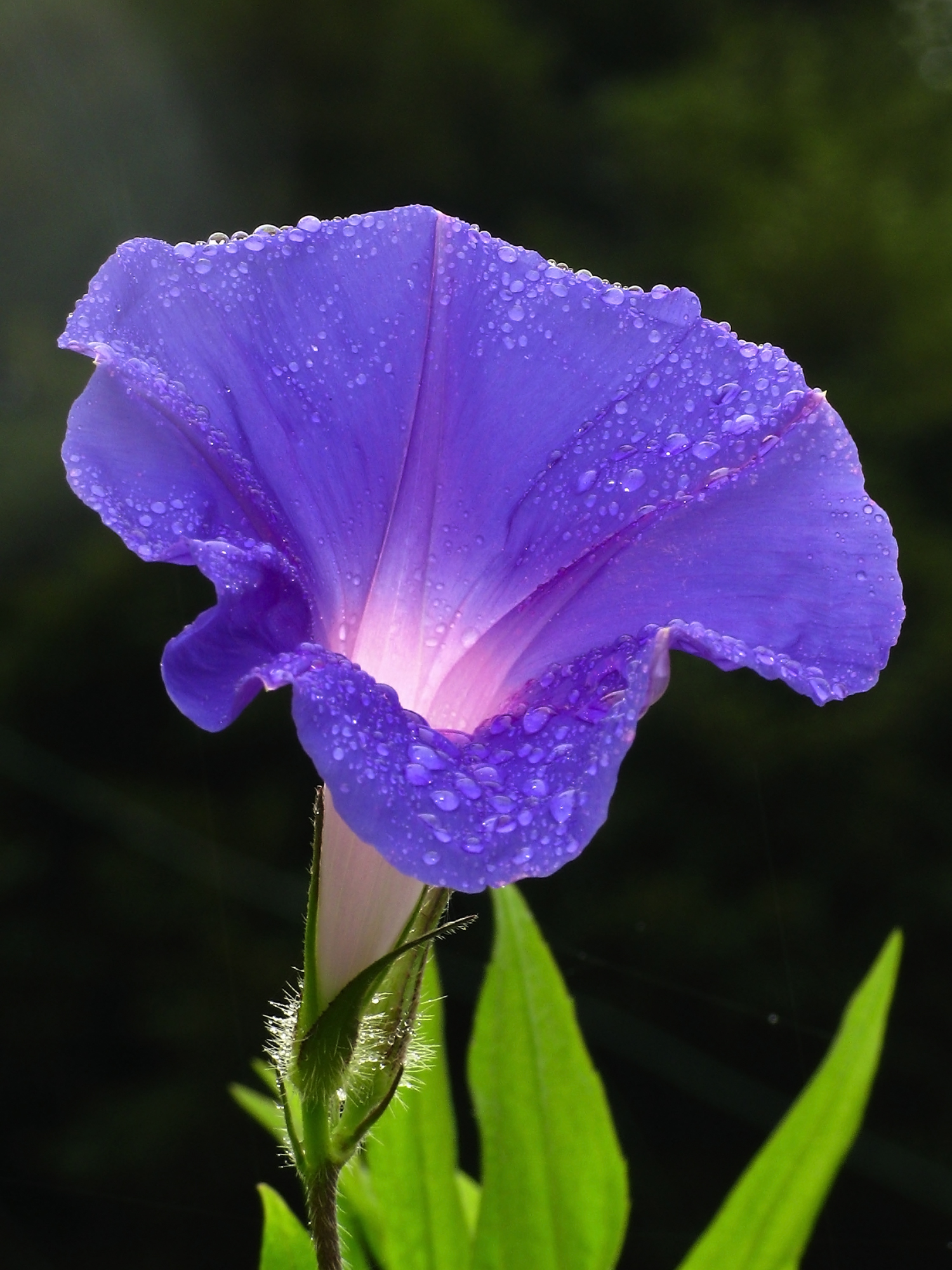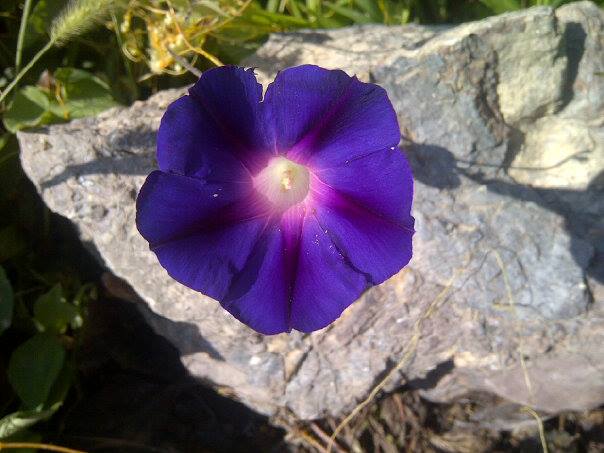.png) |
Ergine
Ergine, also known as d-lysergic acid amide (LSA) and d-lysergamide, is an ergoline alkaloid that occurs in various species of vines of the Convolvulaceae and some species of fungi. The psychedelic properties in the seeds of ololiuhqui, Hawaiian baby woodrose and morning glories have been linked to ergine and/or isoergine, its epimer, as it is an alkaloid present in the seeds. Occurrence in nature Ergine has been found in high concentrations of 20 μg/g dry weight in the sleepygrass infected with an '' Acremonium'' endophytic fungus together with other ergot alkaloids. Ergine is a component of the alkaloids contained in the ergot fungus, which grows on the heads of infected rye grasses. It is also found in the seeds of several varieties of morning glories in concentrations of approximately 10 μg per seed, as well as Hawaiian baby woodrose seeds, at a concentration of around 0.13% of dry weight. History ''Ololiuhqui'' was used by South American healers in shaman ... [...More Info...] [...Related Items...] OR: [Wikipedia] [Google] [Baidu] |
|
Ergoline
Ergoline is a chemical compound whose structural skeleton is contained in a variety of alkaloids, referred to as ergoline derivatives or ergoline alkaloids. Ergoline alkaloids, one being ergine, were initially characterized in ergot. Some of these are implicated in the condition ergotism, which can take a convulsive form or a gangrenous form. Even so, many ergoline alkaloids have been found to be clinically useful. Annual world production of ergot alkaloids has been estimated at 5,000–8,000 kg of all ergopeptines and 10,000–15,000 kg of lysergic acid, used primarily in the manufacture of semi-synthetic derivatives. Others, such as lysergic acid diethylamide, better known as LSD, a semi-synthetic derivative, and ergine, a natural derivative found in ''Argyreia nervosa'', ''Ipomoea tricolor'' and related species, are known psychedelic substances. Natural occurrence Ergoline alkaloids are found in lower fungi and some species of flowering plants: the Mexican specie ... [...More Info...] [...Related Items...] OR: [Wikipedia] [Google] [Baidu] |
|
|
Hawaiian Baby Woodrose
''Argyreia nervosa'' is a perennial climbing vine native to the Indian subcontinent and introduced to numerous areas worldwide, including Hawaii, Africa, and the Caribbean. Though it can be invasive, it is often prized for its aesthetic and medicinal value. Common names include Hawaiian baby woodrose, adhoguda अधोगुडा or vidhara विधारा (Sanskrit), elephant creeper and woolly morning glory. Its seeds are known for their powerful entheogenic properties, greater or similar to those of Ipomoea species, with users reporting significant psychedelic and spiritual experiences. The two botanical varieties are ''A. n.'' var. ''nervosa'' described here, and ''A. n.'' var. ''speciosa'', which are used in Ayurvedic medicine for their medicinal value. ''Argyreia nervosa'' seeds contain various ergoline alkaloids such as ergine. A study reported stereoisomers of ergine to be found in the seeds at a concentration of 0.325% of dry weight. A more recent study reported p ... [...More Info...] [...Related Items...] OR: [Wikipedia] [Google] [Baidu] |
|
|
Argyreia Nervosa
''Argyreia nervosa'' is a perennial climbing vine native to the Indian subcontinent and introduced to numerous areas worldwide, including Hawaii, Africa, and the Caribbean. Though it can be invasive, it is often prized for its aesthetic and medicinal value. Common names include Hawaiian baby woodrose, adhoguda अधोगुडा or vidhara विधारा (Sanskrit), elephant creeper and woolly morning glory. Its seeds are known for their powerful entheogenic properties, greater or similar to those of Ipomoea species, with users reporting significant psychedelic and spiritual experiences. The two botanical varieties are ''A. n.'' var. ''nervosa'' described here, and ''A. n.'' var. ''speciosa'', which are used in Ayurvedic medicine for their medicinal value. ''Argyreia nervosa'' seeds contain various ergoline alkaloids such as ergine. A study reported stereoisomers of ergine to be found in the seeds at a concentration of 0.325% of dry weight. A more recent study reported pr ... [...More Info...] [...Related Items...] OR: [Wikipedia] [Google] [Baidu] |
|
 |
Morning Glory
Morning glory (also written as morning-glory) is the common name for over 1,000 species of flowering plants in the family Convolvulaceae, whose current taxonomy and systematics are in flux. Morning glory species belong to many genus, genera, some of which are: * ''Argyreia'' * ''Astripomoea'' * ''Calystegia'' * ''Convolvulus'' * ''Ipomoea'' (the largest genus) * ''Lepistemon'' * ''Merremia'' * ''Operculina'' * ''Rivea'' * ''Stictocardia'' As the name suggests, most ''morning'' glory flowers unfurl into full bloom in the early morning. The flowers usually start to fade a few hours before the corolla begins to display visible curling. They prefer full solar exposure throughout the day, and Mesic habitat, mesic soils. Some morning glories, such as ''Ipomoea muricata'', ''Ipomoea alba'', and ''Ipomoea macrorhiza'', are night-blooming flowers. History ''Ipomoea nil'', a species of morning glory, was first known in China for its medicinal uses, due to the laxative properties of i ... [...More Info...] [...Related Items...] OR: [Wikipedia] [Google] [Baidu] |
 |
Rivea Corymbosa
''Ipomoea corymbosa'' is a species of morning glory, native throughout Latin America from Mexico as far south as Peru and widely naturalised elsewhere. Its common names include Christmasvine, Christmaspops, and snakeplant. Description and names Known to natives of north and central Mexico by its Nahuatl name Ololiúqui (also spelled ololiuhqui or ololiuqui) and by the south eastern natives as xtabentún (in Mayan), it is a perennial climbing vine with white flowers, often grown as an ornamental plant. Its flowers secrete copious amount of nectar, and the honey that bees make from it is very clear and aromatic. It also grows in Cuba, where it usually blooms from early December to February. It is considered one of the main honey plants of the island. This plant is often used for purposes other than recreation, as natives of Mexico consider the powder produced from its seeds a tool for divination and communion with spirits. Because of the widespread use among native tribes, Coloni ... [...More Info...] [...Related Items...] OR: [Wikipedia] [Google] [Baidu] |
|
Stipa Robusta
''Achnatherum robustum'', commonly known as sleepy grass, (synonyms ''Stipa robusta'', also ''Stipa vaseyi'' subsp. ''robusta'') is a perennial plant in the Poaceae or grass family. Distribution It grows on dry soil in the U.S. Midwest, ranging from South Dakota, Nebraska and Kansas, Wyoming, Colorado and New Mexico to Texas and Arizona, California and Hawaii. Ecology Sleepy grass plants harboring a fungal species (of the genus ''Neotyphodium''), contain ergoline compounds, such as lysergic acid amide (common name, ergine). These compounds appear to be responsible for the sedative A sedative or tranquilliser is a substance that induces sedation by reducing irritability or excitement. They are CNS depressants and interact with brain activity causing its deceleration. Various kinds of sedatives can be distinguished, but t ... effects on mammals when they ingest the infected grass. References External linksUSDA Plants Profile for ''Achnatherum robustum'' (sleepygrass) ro ... [...More Info...] [...Related Items...] OR: [Wikipedia] [Google] [Baidu] |
|
 |
Albert Hofmann
Albert Hofmann (11 January 1906 – 29 April 2008) was a Swiss chemist known for being the first to synthesize, ingest, and learn of the psychedelic effects of lysergic acid diethylamide (LSD). Hofmann's team also isolated, named and synthesized the principal psychedelic mushroom compounds psilocybin and psilocin. He authored more than 100 scientific articles and numerous books, including ''LSD: Mein Sorgenkind'' (''LSD: My Problem Child''). In 2007, he shared first place with Tim Berners-Lee on a list of the 100 greatest living geniuses published by ''The Daily Telegraph'' newspaper. Early life and education Albert Hofmann was born in Baden, Switzerland, on 11 January 1906. He was the first of four children to factory toolmaker Adolf Hofmann and Elisabeth ( Schenk) and was baptized Protestant. When his father became ill, Hofmann obtained a position as a commercial apprentice in concurrence with his studies. At age 20, Hofmann began his chemistry degree at the University of ... [...More Info...] [...Related Items...] OR: [Wikipedia] [Google] [Baidu] |
 |
Morning Glory
Morning glory (also written as morning-glory) is the common name for over 1,000 species of flowering plants in the family Convolvulaceae, whose current taxonomy and systematics are in flux. Morning glory species belong to many genus, genera, some of which are: * ''Argyreia'' * ''Astripomoea'' * ''Calystegia'' * ''Convolvulus'' * ''Ipomoea'' (the largest genus) * ''Lepistemon'' * ''Merremia'' * ''Operculina'' * ''Rivea'' * ''Stictocardia'' As the name suggests, most ''morning'' glory flowers unfurl into full bloom in the early morning. The flowers usually start to fade a few hours before the corolla begins to display visible curling. They prefer full solar exposure throughout the day, and Mesic habitat, mesic soils. Some morning glories, such as ''Ipomoea muricata'', ''Ipomoea alba'', and ''Ipomoea macrorhiza'', are night-blooming flowers. History ''Ipomoea nil'', a species of morning glory, was first known in China for its medicinal uses, due to the laxative properties of i ... [...More Info...] [...Related Items...] OR: [Wikipedia] [Google] [Baidu] |
|
Turbina Corymbosa
''Ipomoea corymbosa'' is a species of morning glory, native throughout Latin America from Mexico as far south as Peru and widely naturalised elsewhere. Its common names include Christmasvine, Christmaspops, and snakeplant. Description and names Known to natives of north and central Mexico by its Nahuatl name Ololiúqui (also spelled ololiuhqui or ololiuqui) and by the south eastern natives as xtabentún (in Mayan), it is a perennial climbing vine with white flowers, often grown as an ornamental plant. Its flowers secrete copious amount of nectar, and the honey that bees make from it is very clear and aromatic. It also grows in Cuba, where it usually blooms from early December to February. It is considered one of the main honey plants of the island. This plant is often used for purposes other than recreation, as natives of Mexico consider the powder produced from its seeds a tool for divination and communion with spirits. Because of the widespread use among native tribes, Colon ... [...More Info...] [...Related Items...] OR: [Wikipedia] [Google] [Baidu] |
|
 |
Intramuscular
Intramuscular injection, often abbreviated IM, is the injection of a substance into a muscle. In medicine, it is one of several methods for parenteral administration of medications. Intramuscular injection may be preferred because muscles have larger and more numerous blood vessels than subcutaneous tissue, leading to faster absorption than subcutaneous or intradermal injections. Medication administered via intramuscular injection is not subject to the first-pass metabolism effect which affects oral medications. Common sites for intramuscular injections include the deltoid muscle of the upper arm and the gluteal muscle of the buttock. In infants, the vastus lateralis muscle of the thigh is commonly used. The injection site must be cleaned before administering the injection, and the injection is then administered in a fast, darting motion to decrease the discomfort to the individual. The volume to be injected in the muscle is usually limited to 2–5 milliliters, depending ... [...More Info...] [...Related Items...] OR: [Wikipedia] [Google] [Baidu] |
|
Ipomoea Violacea
''Ipomoea violacea'' is a perennial species of ''Ipomoea'' that occurs throughout the world with the exception of the European continent. It is most commonly called beach moonflower or sea moonflower as the flowers open at night. Description The corolla of the flower of ''Ipomoea violacea'' is white, distinguishing this species from ''Ipomoea tricolor'', commonly called ''Heavenly Blue''. It is sometimes mistaken for the cultivar ''Pearly Gates'', the corolla of which is also white, probably because of its misleading Latin binomial name, ''Ipomoea violacea'', "violacea" meaning purple. Comparative taxonomies A comparison of the taxonomy of the two plants shows that they belong to different Subgenera, consequently, ''Ipomoea violacea'' should not be used as a synonym for ''Ipomoea tricolor''. In exceptional cases where ''Ipomoea violacea'' has to be used as a synonym of ''Ipomoea tricolor'', one must specify the incorrect usage by using the abbreviation 'Auct.' for ''Auctorum''. ... [...More Info...] [...Related Items...] OR: [Wikipedia] [Google] [Baidu] |
|
|
Baseline (pharmacology)
A baseline in science (including medicine) is the initial conditions found by observation and measurement at the beginning of a survey or clinical trial or which is used for comparison with later data collected during or after the survey or trial to identify and measure changes, often with the intention of assessing the effects of a treatment or procedure. In environmental science a baseline study is necessary to be able to accurately determine impact by monitoring the environment and comparing the changing situation with the initial conditions after development has occurred. In some cases, baseline information already be available from previous surveys, but it may be necessary to gather data in the field. Example: If a patient with kidney failure (whose creatinine is usually 3.0 mg/dL) suddenly has a creatinine Creatinine (; ) is a breakdown product of creatine phosphate from muscle and protein metabolism. It is released at a constant rate by the body (depending on muscle m ... [...More Info...] [...Related Items...] OR: [Wikipedia] [Google] [Baidu] |